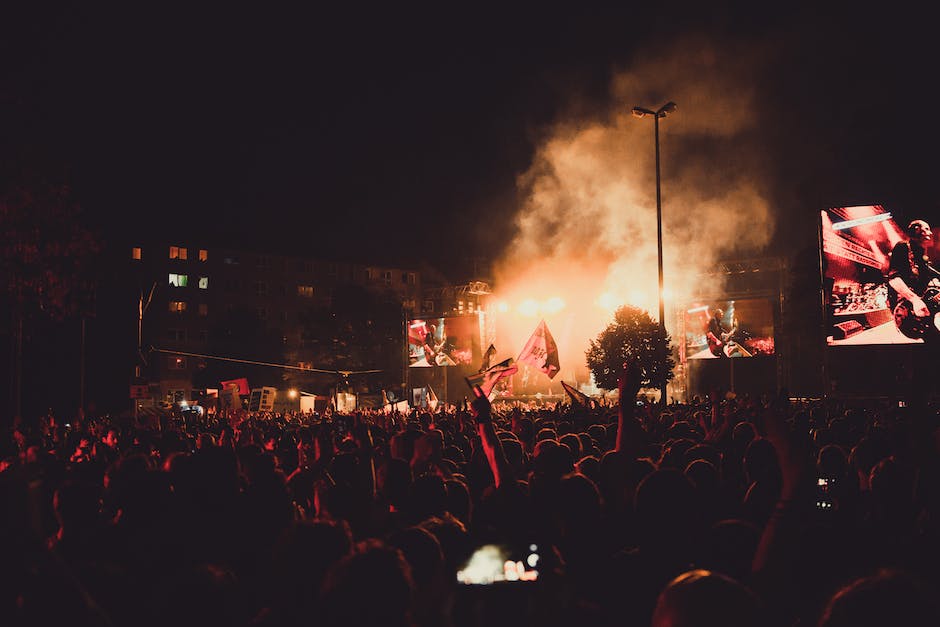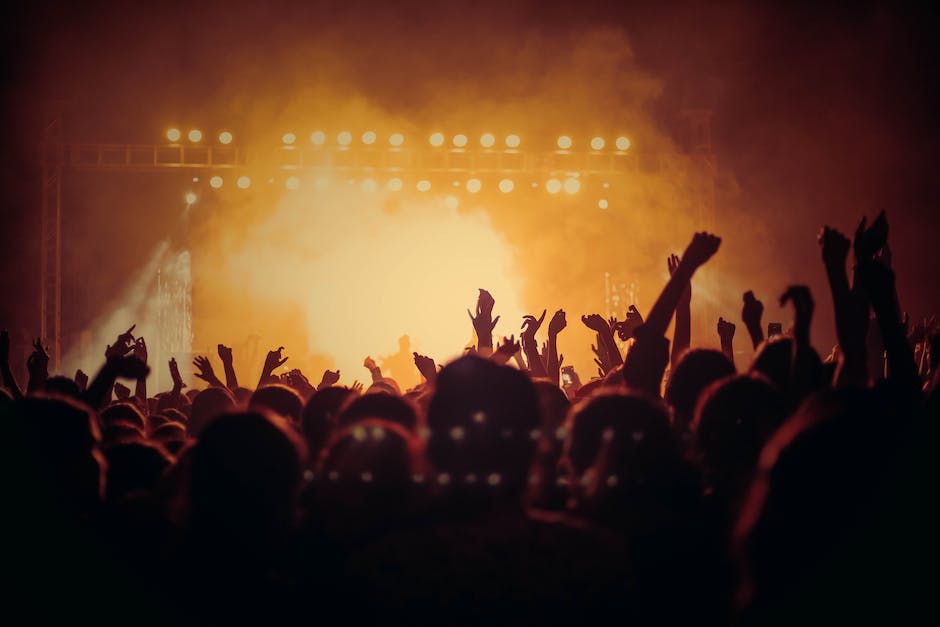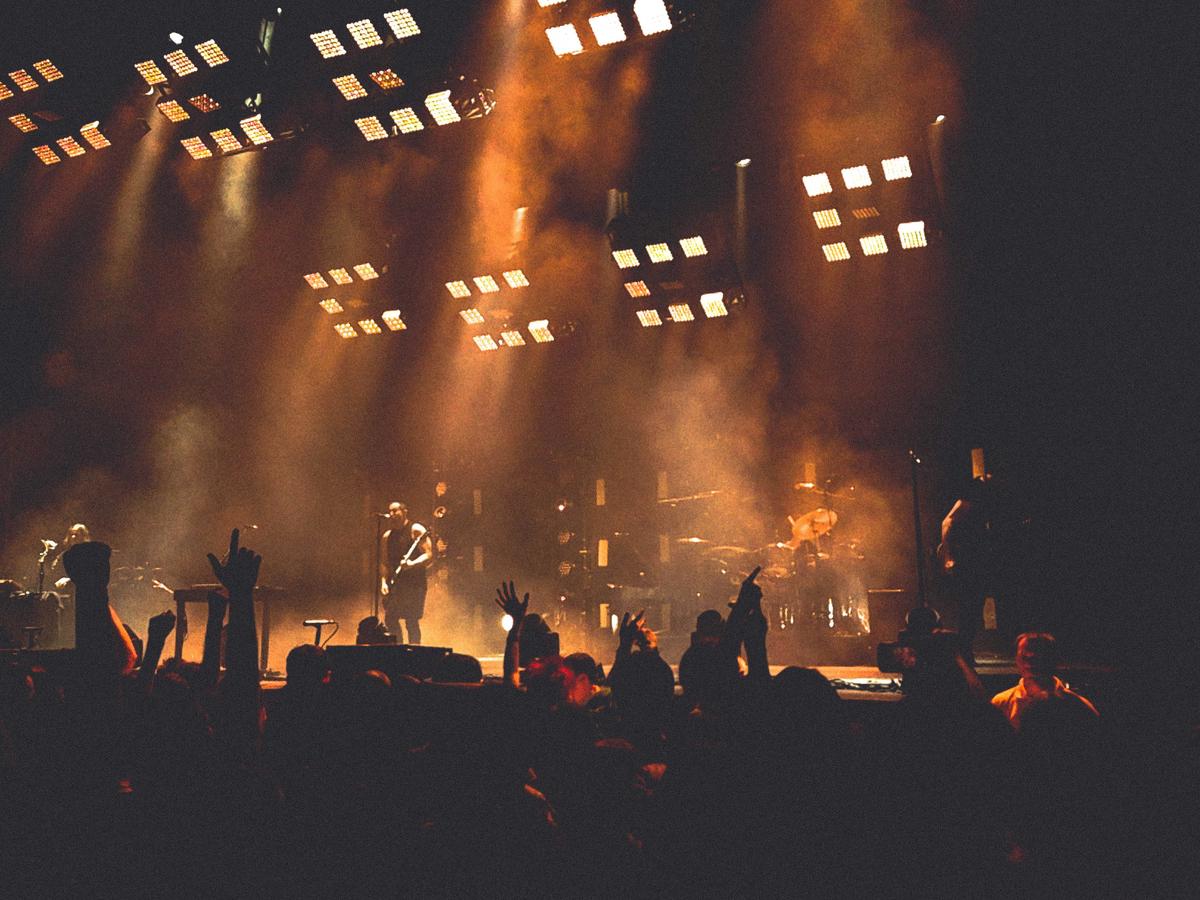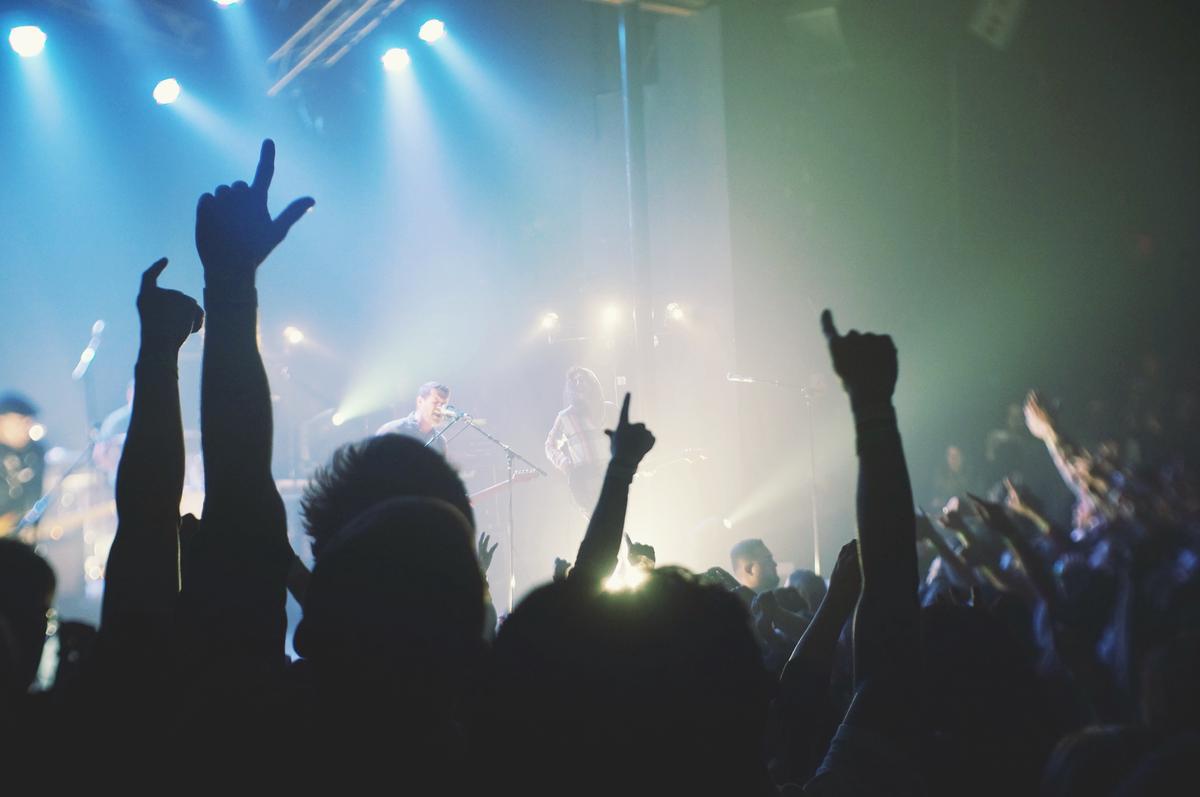The magic of live performances is encapsulated in the electrifying atmosphere, moving harmonies, and the palpable exchange of energy between performers and the audience. The triumph of capturing this collective emotion and complex energy rests in the hands of skilled professionals – photographers, sound engineers, and videographers, who harness their expertise to embalm these fleeting moments of music, bringing them to life long after the last note has faded. Thriving amidst challenges such as unpredictable lighting, varying movements of performers or crowd management, these artisans capably capture the raw, unfiltered essence of performances, beating odds and employing technologically advanced methods. Delving into the landscape of capturing live performances, we explore the victories, barriers, and the pivotal role of advancing technology in shaping this venture.
The Art of Capturing the Energy
A symphony undulates through the crowd – the pulsating rhythm, the soaring melodies, the rhythmic drums, each note cascading down onto enthralled observers. A live performance surpasses the confines of sound alone, morphing into an immersive experience that seizes hold of every sense. A visceral resin of human expression, it transcends recorded music, commanding a unique, irreplaceable space in the world of music. The bedrock question is always: how, then, can this transcendental energy be effectively captured? This is the dilemma whispering in the ears of every music aficionado and the answer herein lies in the interplay of the elements: emotion, community, and technology.
To begin, at the heart of every music performance lies a reservoir of raw, untamed emotion. An electricity spreads from performer to listener, whispered in the language of melodies, and mirrored on the faces of the concertgoers themselves. Capturing this emotion requires another transducer: a photographer. Nimble and perceptive, they etch out the right moments, freeze-framing the passion that envelops the concert. The smallest moments – eyes closed in ecstasy, hands outstretched in a shared chorus, tears spilling down a fan’s face – distill the true spirit of a live show.
Yet, music extends its tendrils further, reaching deeper. It weaves people together, binding them as a cohesive community, dancing to the rhythm of shared human experience. This vital aspect must not be overlooked. One way of encapsulating this shared experience is through the written word. Concert reviews, fan recounts, blog posts – each of them paint a vivid tapestry of shared memories, individual experiences coalescing into an inclusive narrative. These written relics of a concert will continue to echo long after the last note has faded, spiraling through time, feeding the lore of music appreciation and perpetuating the energy of the performance.
Further, technology broadens the avenue for immortalizing live performance. The arrival of digital platforms like Instagram, YouTube, and TikTok allows for instantaneous documentation and sharing. Short videos, clever captions and apt hashtags manage to convey snippets of the energy at play – a fleeting but potent impression of a journey that was. Meanwhile, live broadcasts and virtual reality concerts can provide a widescreen glimpse into the microcosm of the live music scene for those unable to be physically present.
An additional artillery in our arsenal is the process of live recording or “direct to disc” recording. The palpable dynamism, the raw ebb and flow of energy, the organic dialogue between the artist and the audience can be bottlenecked into this old yet irreplaceable method. Granted, it might lack the polish and perfection of studio-generated music, but it possesses an irrepressible spirit that mirrors the atmosphere in the concert hall.
In essence, the energy of a live performance twinkles and thrives in the interstitial spaces – between artist and listener, between melody and silence, between reality and memory. Capturing it effectively demands a multi-sensory approach, a blend of emotion, community, and technology. It’s a creative pursuit that demands as much passion and artistry as the music itself. The echo of a live gig may dampen as days pass, but captured right, its soul will sing loud and clear through the noise of ages.

Challenges in Capturing Live Performances
In the enveloping realm of live music performances, there’s a volatile cadence, a raw narrative waiting to be captured – a dance, often elusive, that unfolds between artist and audience, chord and echo, expectation and surprise. This dance is what professionals strive to capture but are often faced with significant hurdles.
One such hurdle is the ever-intrusive ambient noise. Far from the controlled environment of a studio, professionals have to workaround clamoring crowds, miscellaneous stage noises, and the harsh elements of outdoor concerts. Separating the music from the chaos can be a daunting task, reserving each note’s purity amidst the cacophony, a seemingly insurmountable hurdle.
Accommodating the unexpected is another professional challenge. Unlike the predictable progression of a studio session, live performances are the playgrounds of spontaneity. Concerts are a flurry of improvisations, last-minute setlist changes, spontaneous interactions, and unexpected acoustics. This lack of predictability makes it vital for professionals to stay alert and adaptable, ensuring they capture each surprise serenade and unplanned cadenza with unparalleled precision.
Closely related are the hurdles brought on by the dynamic nature of live performances. The immovable quality of recording studios gives way to a setting where every element – from the lighting to the stage design and audience interaction – is in constant flux. Professionals have to juggle between these elements, capturing not just the music but the environment and ambiance that houses the melody.
The volatile lighting conditions prevailing at live concerts is another substantial hurdle, especially for visual documentation. Bursting pyrotechnics, oscillating spotlights, variable stage lighting and dim audience sections can create a visually chaotic environment. Professionals have to keep vigilance flushing, adjusting their tactics to do justice to the performance unfolding under a spectrum of lighting conditions.
Ease of movement or the lack of it, is another obstacle. Woven into a crowd of zealous fans or ensnared behind a barrier, professionals face the challenge of restrictive movement and limited space. Compromised vantage points and impeding arms thrusting smartphones into the air make the quest to capture something as intangible as musical energy an immensely complex task.
Lastly, the hurdle of musicality itself can’t be ignored. Truly capturing a performance extends beyond mere documentation. It’s akin to translating the unsaid, the unstruck chords of emotion that resonate with each note. Professionals need to immerse themselves deeply, yet objectively, into the fabric of the music to extract and present a concert’s soul, with all its nuanced crescendos and diminuendos.
In the midst of cheering crowds and reverberating beats, there lies the challenge of doing justice to the resounding echoes of a performance. Professionals work tirelessly, navigating through these hurdles, striving to freeze-frame a symphony, to capture a melody’s flight onto a tangible canvas. Overcoming these hurdles, they seize the fleeting moments of passion and euphoria, enshrining them into memories that echo the powerful magic of music’s live performance. These captured moments linger long after the last note fades out, painting a soundscape that continues to reverberate with the energy of the musical dance it bears witness to.

Triumphs in Capturing Live Performances
Gaze into the realm of musical endeavor and you will spot another feat that often goes unnoticed – the engineering innovation of capturing live performances.
Live music is ephemeral, and the endeavor to bottle its fleeting brilliance can be likened to a sunbeam’s attempt to freeze a bubble. It’s a challenge that has resulted in astounding triumphs, demonstrating, once again, the potency of human ingenuity.
Circling back to the golden epoch of music, we stumble upon the Beatles at the rooftop of Apple Corps in 1969. This impromptu live performance, much like a phoenix rising, was captured in its full vivacity, setting the foundation for generations to come. This event marked a milestone in the music world, hinting at the possibility of capturing the unfiltered energy and unpolished rawness of live music.
The sea-change came with the iconic concert of Woodstock in 1969, arguably the most successful attempt to capture a live music festival in its full grandeur. The festival, boasting a line-up of the legends of rock and roll, was an embodiment of an era. The concert film that spooled from this event etched the vibrations of the crowd, the interplay of lights and dark, the muteness and the chaos, into a moving tableau that admiring generations still cherish.
This remarkable fête echoed in the live exploits that followed, one notable instance being Queen’s 1985 Live Aid performance. Freddie Mercury, a maestro who created ripples with every note, poured out his soul on that stage, creating a symphony that still resonates – thanks to the unwavering commitment to preserve that majestic display.
If photographs capture the poetry of frozen moments, audio recordings are the stories that they whisper. Bob Dylan’s “The Bootleg Series Vol 4: Bob Dylan Live 1966”, the famed “Judas” concert in Manchester unfolds such a story of an icon’s standoff with his audience over his musical direction. It’s an exquisite collection of protest and acoustic folk, whose rhythm knocks at the door of one’s consciousness, bearing witness to an unrepeatable moment in music history.
Take a seismic leap into the era of digitization, and we welcome technology as the ultimate troubadour. Daft Punk’s Alive 2007, recorded at Bercy in Paris, stands as testament to this evolution. It illuminates the trajectory through which the captured live performance has traveled, from orchestrated precision to technology-infused intuitiveness. With the ample usage of effects and remixes, the performance echoes the similitude of the lively and enthusiastic crowd, ringing in the ears of music aficionados now and forever.
Peel back the layers, and recognize the triumphant strides in capturing the mood, the ambience, the atmosphere, and the emotion of live music – a feat that shapes and evolves with the music, yet remains true to its essence. It’s an age-old dance between artist and audience, a symphony of experiences, a medley of moments that continue to sing the vibrant ballad of live performances till date. Though a pursuit for perfection in capturing live music prevails, it’s the captured imperfections that truly echo the authenticity of the moment, and contribute to the mosaic of our collective musical memory.

Impact of Technology on Capturing Live Performances
Thriving on the love of sound, there is something innately powerful about capturing live performances. Spontaneity and unedited rawness that lend to the distinctive character of life in motion, it is no simple task, yet technology has had innumerable successes bringing to life the otherwise lost moments on stage.
One cannot help but consider how advancement in tech has modeled our ways of freezing these potent exchanges between performer and spectator. While previously we were reliant on memory, or fortunate to grasp a photo or two, we are now privy to revolutionized gadetry and hi-tech gear allowing each magical instant to be immortalized for enjoyment long after the final chord has been struck.
Among the top technologies capturing this synergy in the realm of live music, high-resolution videos are leading the way. Be it the Bootleg Beatles dispelling the magic of legendary rock across centuries or the heart-stirring renditions from Woodstock – all have been gloriously captured by the lens, providing a recorded legacy for generations of music lovers.
A monumental leap was the advent of 4K technology and drone footage in capturing live performances. Dynamic, unimpeded aerial views, like those supplementing Queen’s unforgettable 1985 Live Aid performance, provide a unique purview. Augmenting snippets from ground level shots and stationary cameras, a fully-immersed experience awaits viewers.
Virtual reality (VR) has been another game-changer, fortifying the conviction that music cannot be separated from the vibrancy and vivacity of its environment. Take Daft Punk’s Alive 2007 set, where VR technology transported audience members who couldn’t physically be at the concert. Melding where the physical and digital worlds meet, VR technology succeeds in capturing not just the audio and visual aspects but the atmospheric nuances that truly define a live performance.
But what happens when the voices of hundreds commingle in a rhythmic uproar or thousands of hands start clapping in organic unison? This may have previously overshadowed the artist’s voice, but here we find another advancement – multi-track live recording. Capable of preserving each instrument and vocal line on a separate track, mixers can create a balanced recording that brings forward the music while still retaining that unmistakable live energy.
It is remarkable how innovative technology like holography and augmented reality (AR) have enhanced the participatory experience of audiences. They facilitate visually-creative backdrops for the artists, transforming a memorable concert into a literally fabulous spectacle. Stage lighting, once worked manually, has evolved into an intricate facet of the performance that syncs up with the rhythm and tempo of the music, intricately tied with the emotional ebb and flow of the performance.
These advancements not only allow us to frame moments we don’t want to forget, they also serve to immortalize the artists in time. They were there during the impromptu Beatles’ rooftop performance, preserving the energy, electric of the crowd, and the sound that filled the air. They documented Bob Dylan’s “The Bootleg Series Vol 4: Bob Dylan Live 1966,” encapsulating not just the music but the palpable rebellion hinted every strummed chord.
The dance in music is not just within notes and melodies, but also within moments, memories, and shared experiences. If life is a song, then capturing live performances is the journal entry of these melodic life moments, filled with authenticity and imperfections that resonate with the human experience, soundtracked by universal tunes. It is through this language of rhythm and rhyme, streamed chords and synced beats, that we become united. Technology, in essence, has become the conduit, amplifying the music of the world, ensuring we don’t miss a beat.

Photo by desimendoza on Unsplash
The journey of capturing live performances has been a dance of triumphs and tribulations, involving innovative minds exploiting cutting-edge technology to continuously redefine the boundaries of this art. Progressing from conventional capturing methods to the implementation of high-definition cameras, drones, and sophisticated audio-visual equipment, technology has intimately intertwined with this field, molding it into what we see today. The extraordinary capability to seize transient moments of musical brilliance and meticulously present them for posterity reflects the immense evolution of this field. On the horizon of unprecedented advancements like virtual reality, it holds immense potential in further elevating the concert experience and preserving performances. It’s fascinating to ponder on the future, to envision how the transformative touch of technology will continue to redefine the art of capturing live performances.

Comments.
Currently there are no comments related to this article. You have a special honor to be the first commenter. Thanks!